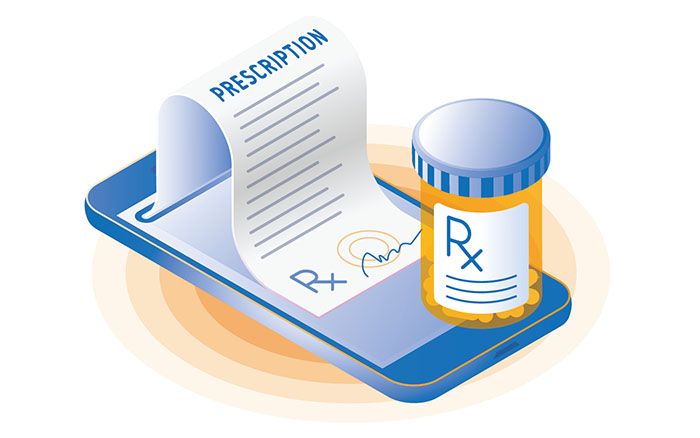Sharing Inspiration and Motivation
When inspiration and motivation are lacking, productivity, patient outcomes, and campus impact tend to wane. That’s why it’s so important to focus on fostering inspiration amongst both staff and students.
Moreover, a key role of effective leaders in college student health clinics is to foster a positive and inspiring work environment. Specifically, an environment that motivates and empowers both staff and students. When inspiration and motivation are lacking, productivity, patient outcomes, and campus impact can suffer.
Key strategies for fostering inspiration and motivation include:
- Setting a Positive Example: Leaders should demonstrate a positive and enthusiastic attitude towards their work, which can inspire and motivate their team.
- Creating a Supportive and Positive Work Environment: Foster a culture of collaboration, respect, and encouragement, where team members feel valued and appreciated.
- Encouraging Growth and Development: Provide opportunities for professional development, mentorship, and coaching to help team members reach their full potential.
- Recognizing and Rewarding Achievements: Acknowledge and celebrate the contributions of staff and students, fostering a sense of ownership and commitment.
- Promoting a Positive Work-Life Balance: Encourage healthy work habits and support staff in maintaining a healthy balance between their professional and personal lives.
To run a thriving college health clinic, a culture of inspiration and motivation is necessary. This fosters productivity, engagement, and positive outcomes.
Effective Communication
Communication is key! This includes the ability to clearly articulate your vision and goals for the clinic, as well as your expectations.
Great college health leaders are also skilled at listening and responding to the needs and concerns of their staff and students. Plus, they foster open and honest communication within the clinic.
For instance, according to the American Management Association, “The more open a leadership team is in sharing their vision for the company—which should include their goals, strategies, and values—the more likely each employee will understand their role in the greater mission and engage to make success happen as part of the team.”
Ensure that you’re incorporating these communication skills:
- Clarity of Vision: Leaders should clearly define and communicate their vision for the clinic, outlining long-term goals and the path to achieving them.
- Transparent Expectations: Set clear expectations for both staff and students regarding responsibilities, standards, and performance.
- Active Listening: Engage in active listening to understand the needs and concerns of both staff and students. This fosters trust and collaboration.
- Two-Way Feedback: Encourage open dialogue by providing and receiving constructive feedback regularly. It’s also important to promote continuous improvement.
- Inclusive Decision-Making: Involve staff and students in decision-making processes to enhance buy-in and support for clinic initiatives.
These practices build a strong foundation for effective leadership and contribute to a positive and productive clinic environment.
Learn more about the connection between the student experience and active listening here.
Problem-Solving
Great leaders in college health possess exceptional problem-solving skills. This enables them to navigate challenges and setbacks effectively.
For example, this involves identifying and analyzing issues, developing and implementing creative solutions, and adapting to changing circumstances.
Key problem-solving skills for college student health clinic leaders include:
- Identifying and Analyzing Issues: The ability to accurately diagnose problems and understand their root causes.
- Developing Creative Solutions: Generating innovative and effective solutions to address challenges.
- Adapting to Change: The ability to adjust plans and strategies as needed to respond to changing circumstances.
- Decision-Making: Making informed and timely decisions, even under pressure.
- Delegation: Assigning tasks and responsibilities to team members to maximize efficiency and productivity.
- Empowerment: Fostering a culture of empowerment, where team members feel valued and trusted to take initiative.
Leaders who cultivate these problem-solving skills can effectively address the challenges and complexities of managing a college health clinic. This ensures that students receive the highest quality of care. This not only helps to alleviate workload but also allows leaders to focus on strategic planning and high-level decision-making.
Fostering Lifelong Learning
In addition to the characteristics mentioned thus far, great leaders are also committed to continuous learning and improvement. Staying up-to-date on the latest research, best practices, and learning opportunities demonstrates your dedication to your team’s professional development and growth. By investing in your own education, you create a culture of lifelong learning that inspires and motivates your team members.
Consider these strategies to foster a culture of lifelong learning:
- Lead by Example: Demonstrate your own commitment to learning by actively seeking out new knowledge and skills.
- Encourage Professional Development: Provide opportunities for your team to attend conferences, workshops, and training sessions.
- Create a Learning Environment: Foster a supportive and collaborative environment where team members feel comfortable sharing ideas and learning from each other.
- Recognize and Reward Learning: Acknowledge and celebrate your team’s achievements and accomplishments in their professional development.
- Offer Mentorship and Coaching: Provide mentorship and coaching opportunities to help your team members grow and reach their full potential.
Emphasizing the importance of lifelong learning, college leaders can create a more engaged, innovative, and successful team.
Committing to Diversity
A key characteristic of exceptional leaders in college student health and counseling clinics is their unwavering commitment to diversity. These leaders understand the importance of creating a welcoming and inclusive environment where all students feel valued, respected, and supported, regardless of their background or identity.
Key aspects of DEI leadership include:
- Cultural Competence: Recognizing and appreciating diverse cultural perspectives and experiences.
- Addressing Inequities: Identifying and addressing disparities in access to care and treatment outcomes.
- Fostering a Sense of Belonging: Creating a supportive and inclusive environment where all students feel welcome and valued.
- Promoting Diversity Within the Team: Building a diverse team can bring different perspectives and experiences to the table, leading to more innovative and effective solutions.
By prioritizing diversity, leaders can ensure that all students have equal access to the care and support they need to thrive. Moreover, a diverse and inclusive clinic environment fosters a sense of belonging, trust, and open communication, ultimately improving the quality of care provided.
Leading With Empathy
Finally, great leaders in college student health balance their professional responsibilities with compassion and empathy. This means connecting with students and staff in a compassionate way that shows genuine care. It also involves recognizing their needs and responding with meaningful support.
Great leaders in college student health clinics possess qualities that help them effectively guide and support both the clinic and its staff. Additionally, they also create a positive, supportive environment that fosters student well-being.
Great leaders in college student health clinics:
- Connect With Others on a Personal Level: Take the time to get to know their staff and students individually and understand their unique needs and experiences.
- Show Empathy and Compassion: Demonstrate genuine care and concern for staff students’ well-being, both physically and emotionally.
- Create a Supportive Environment: Foster a welcoming and inclusive atmosphere where staff and students feel comfortable seeking help and support.
- Respond to Needs in a Meaningful Way: Actively listen to students’ concerns and take steps to address their needs in a timely and effective manner.
In summary, demonstrating empathy and compassion can create a positive and supportive environment that fosters trust, builds relationships, and ultimately improves student outcomes.
Key Takeaways
In conclusion, effective leadership in college student health clinics requires a multifaceted approach that includes a variety of essential qualities. Leaders who embody these principles play a vital role in promoting student well-being and fostering a positive campus culture.
By doing so, they ensure that students have access to the high-quality care and support they need to thrive. Ultimately, strong leadership in health clinics contributes to both student success and a healthier campus environment.










 College health and counseling clinics are both vital to supporting the overall well-being of students, yet they often operate in silos. This lack of connection can result in incomplete information and fragmented care for students who may require both physical and mental health support.
College health and counseling clinics are both vital to supporting the overall well-being of students, yet they often operate in silos. This lack of connection can result in incomplete information and fragmented care for students who may require both physical and mental health support.